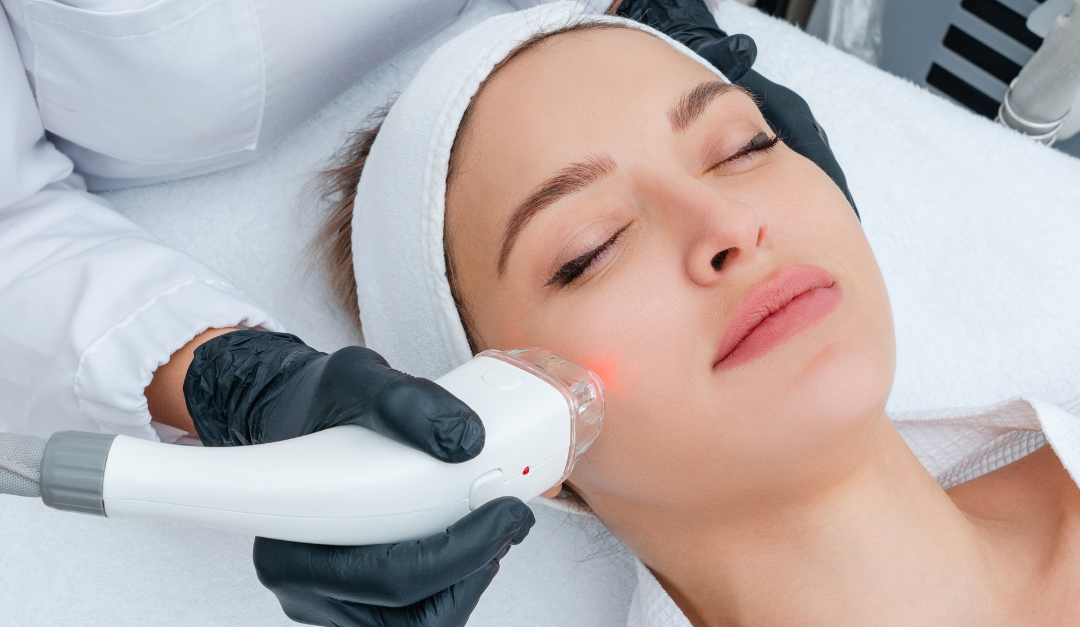As of April 2023, the State of Ohio has made significant changes to its laws regarding Light-Based Devices. Light-Based Devices are any devices that can be made to produce or amplify electromagnetic radiation wavelengths equal to or greater than one hundred eighty nm, but less than or equal to 1.0 X 10 6nm (ten to the sixth power), and that is manufactured, designed, intended, or promoted for irradiation of any part of the human body to affect the structure or function of the body. Simply put, Light-Based Devices are lasers which are commonly used for laser hair removal and laser skin treatments.
Past Law
In July 2021, Ohio made major changes to its previous laws surrounding Light-Based Devices. Physicians could now delegate the application of a vascular laser for non-ablative dermatologic procedures according to legal requirements laid out in the Administrative Code. They could also delegate the application of light based medical devices for hair removal, as well as the application of phototherapy for the treatment of hyperbilirubinemia in neonates and the application of phototherapy and photodynamic therapy for dermatologic purposes.
Now what procedures exactly did this law affect? A non-ablative dermatologic procedure is a dermatologic procedure that is not expected or intended to excise, burn, or vaporize the epidermal surface of the skin. Phototherapy means the application of light for treating hyperbilirubinemia in neonates or the application of ultraviolet light for treating psoriasis and similar skin diseases. Photodynamic therapy means light therapy involving the activation of a photosensitizer by visible light in the presence of oxygen, resulting in the creation of reactive oxygen species, which selectively destroy the target tissue.
Physician assistants must be licensed and authorized under the Ohio Revised Code. Registered nurses, or licensed practical nurses, must also be adequately licensed and trained. Additionally, their level of skill must include eight hours of basic education on the topics listed in Ohio Administrative Code 4731-18-03 (A)(7)(a), observation of at least fifteen procedures for each specific type of non-ablative vascular procedure, that will be delegated to the registered nurse or licensed practical nurse, the performance of at least twenty procedures under direct physical oversight of a physician on each specific type of procedure delegated, and documentation maintained by the physician of satisfactory completion of such training. The physician must provide on-site supervision at all times when the delegate applies the vascular laser, and the physician can supervise two people under this rule at most.
Physician delegation of vascular lasers for non-ablative dermatologic procedures under the new laws required several conditions to be met.
Those conditions are as follows:
- The laser must have been cleared or approved by the FDA for the specific intended non-ablative dermatologic procedure.
- Using the laser for the specific procedure must be within the physician’s normal course and scope of practice and expertise.
- The physician has first seen and evaluated the patient to determine whether the proposed laser procedure is appropriate.
- Following the initial application of the laser, the physician must have seen and evaluated the patient before continuation of treatment to determine that the patient responded well to the initial application; and
The delegation rules for light based medical devices for hair removal required all of the same conditions and some additional ones. The delegation can be made to a licensed physician assistant with an effective supervision agreement with a physician. It may also be made to a cosmetic therapist who is either licensed under the Revised Code as of April 11, 2021, or who has completed a cosmetic therapy course of instruction for a minimum of 750 clock hours and received a passing score on the Certified Laser Hair Removal Professional Examination administered by The Society for Clinical and Medical Hair Removal. A registered nurse or licensed practical nurse can also be delegated to. For cosmetic therapists, registered nurses, and licensed practical nurses, the physician must ensure the person performing the procedure receives adequate training and education to the same standards as required for non-ablative dermatological procedures as listed above.
Current Law
As of April 30, 2023, the State of Ohio has made additional revisions to the above law. Those revisions are detailed here. Beginning with the section of 4731-18-01 Ohio Administrative Code that covers definitions, the section definition “Off-site supervision” has been removed from the text of the Code. This demonstrates that, while delegation and supervision of these procedures are still allowed, Physicians are no longer permitted to supervise them from a location other than where the delegate is performing the procedure.
In regards to the previous regulations regarding Light-Based Devices used for specified non-ablative procedures, the regulations as they stood in the 2021 draft have had sections rescinded and/ or edited with the new regulations effective as of April 30, 2023. Physicians may delegate for several different forms of treatments, but may not delegate the application of Light Based Medical Devices for ablative procedures.
For delegation of the use of Light-Based Devices to perform hair removal treatments, the new regulations can be found in section 4731.33 of the Revised Code rather than the sections of the Administrative Code previously allowed. The Revised Code states that delegation may only occur when the following conditions are met:
A physician may delegate the application of light-based medical devices for the purpose of hair removal only if all of the following conditions are met:
- The light-based medical device has been specifically cleared or approved by the FDA for the removal of hair from the human body.
- The use of the light-based medical device for the purpose of hair removal is within the physician’s normal course of practice and expertise.
- The physician has seen and evaluated the patient to determine whether the proposed application of the specific light-based medical device is appropriate.
- The physician has seen and evaluated the patient following the initial application of the specific light-based medical device, but before any continuation of treatment, to determine that the patient responded well to that initial application of the specific light-based medical device.
- The person to whom the delegation is made is one of the following:
- A physician assistant licensed under Chapter 4730. of the Revised Code with whom the physician has an effective supervision agreement;
- A person who was licensed as a cosmetic therapist under Chapter 4731. of the Revised Code on April 11, 2021;
- A person who has completed a cosmetic therapy course of instruction for at least seven hundred fifty clock hours and received a passing score on the certified laser hair removal professional examination administered by the society for clinical and medical hair removal;
- A registered nurse or licensed practical nurse licensed under Chapter 4723. of the Revised Code.
Additionally, for delegation to be permitted, the physician shall ensure that the person to whom the delegation is made has the proper education and training to provide the level of skill and care necessary. The Revised Code defines the required level as follows:
- The person has completed eight hours of basic education that includes the following topics:
- Light-based procedure physics;
- Tissue interaction in light-based procedures;
- Light-based procedure safety, including the use of proper safety equipment;
- Clinical application of light-based procedures;
- Preoperative and postoperative care of light-based procedure patients;
- Reporting of adverse events.
- The person has observed fifteen procedures for each specific type of light-based medical device for hair removal that the person will perform under the delegation.
- The person shall perform at least twenty procedures under the direct physical oversight of the physician on each specific type of light-based medical device procedure for hair removal delegated.
Regarding the previous Rule 4731-18-03(C), the section regarding the off-site supervision of the use of light based medical devices for hair removal has been removed. This and removing the off-site supervision definition from Rule 4731-18-01 demonstrate that the intent is to no longer permit off-site supervision for the use of Light-Based Devices in Ohio under the new regulations. Section (C) replaced the previous section (D).
Another general change that has been made is that, where the prior version of this rule controlled the delegation to cosmetic therapists, physician assistants, registered nurses, and licensed practical nurses, all references to cosmetic therapists has been removed from Rule 4731-18-03. This is likely because Ohio is no longer issuing cosmetic therapist licenses as of the 2021 rule changes. There have also been some additional changes to what constitutes a violation under Rule 4731-18-03 as section (B) regulations, which were previously contained within the rule, have been moved to section 4731.33 of the Revised Code.
Effects of Legal Changes
Overall, the changes to this regulation affect cosmetic therapists and offices using off-site supervision the most. For businesses utilizing off-site supervisors to supervise RNs or PAs, the best practice would be to transition any off-site physician to an on-site physician. Since off-site supervision is no longer permitted in Ohio as of April 30, 2023, any business operating with an off-site physician needs to be in compliance with these new Ohio regulations. To maintain compliance, having an on-site physician while all procedures using Light-Based Devices are being performed is the safest option. Anyone in Ohio still operating under a cosmetic therapist license should know these changes and how they affect their career. They should review all the current laws surrounding that profession to ensure they practice within allowed parameters.
*This blog post is for informational purposes only and does not constitute legal, financial, or medical advice or the forging of an attorney-client relationship. Please retain the services of an attorney licensed in the State of Ohio to receive legal advice on how the law applies to your business.


